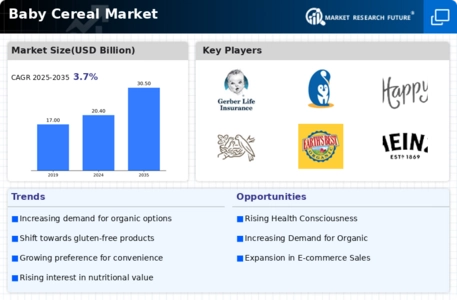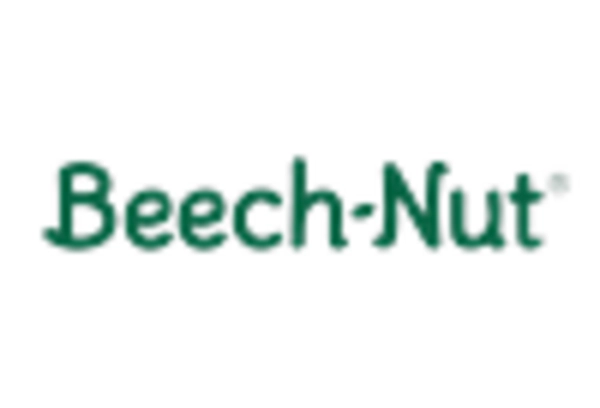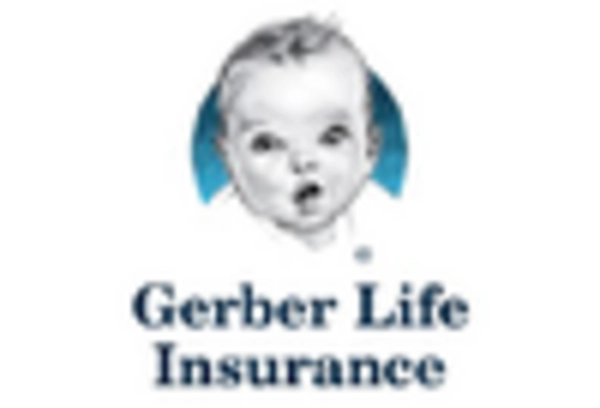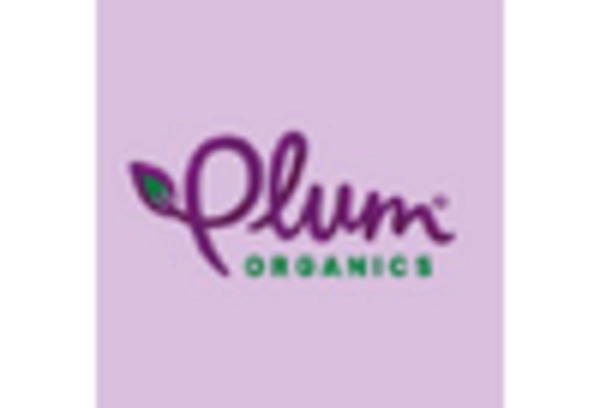Nutritional Awareness
The increasing emphasis on nutrition among parents appears to be a pivotal driver in the Baby Cereal Market. Parents are becoming more discerning about the ingredients in baby food, seeking options that are organic, non-GMO, and fortified with essential vitamins and minerals. This trend is reflected in market data, which indicates that the demand for organic baby cereals has surged, with a notable increase in sales over the past few years. As parents prioritize health and wellness for their infants, manufacturers are responding by reformulating products to meet these expectations. This heightened awareness not only influences purchasing decisions but also shapes marketing strategies within the Baby Cereal Market, as brands strive to communicate their commitment to quality and nutrition.
Diverse Flavor Profiles
The Baby Cereal Market is witnessing a shift towards more diverse flavor profiles, as parents seek to introduce their infants to a variety of tastes early on. This trend is driven by the understanding that early exposure to different flavors can influence a child's future eating habits. Manufacturers are responding by expanding their product lines to include unique combinations of fruits, vegetables, and grains. Market data indicates that cereals with innovative flavors are gaining traction, appealing to adventurous parents who wish to provide their children with a broad palate. This diversification not only enhances the appeal of baby cereals but also fosters brand loyalty within the Baby Cereal Market, as parents are more likely to choose brands that offer exciting and varied options.
Convenience and On-the-Go Options
The fast-paced lifestyle of modern families is driving a demand for convenience in the Baby Cereal Market. Parents are increasingly seeking products that are easy to prepare and consume, particularly those that can be taken on-the-go. This trend is evident in the rise of single-serve packaging and ready-to-eat options, which cater to busy parents who value time-saving solutions. Market data suggests that products designed for convenience are experiencing higher growth rates compared to traditional offerings. As a result, manufacturers are innovating to create portable and user-friendly packaging, which not only enhances the consumer experience but also positions brands favorably in the competitive landscape of the Baby Cereal Market.
Sustainability and Ethical Sourcing
Sustainability has emerged as a crucial consideration for consumers in the Baby Cereal Market. Parents are increasingly concerned about the environmental impact of their purchases, leading to a preference for brands that prioritize ethical sourcing and sustainable practices. This shift is prompting manufacturers to adopt eco-friendly packaging and to source ingredients from sustainable farms. Market data suggests that products marketed as sustainable are experiencing a rise in demand, as environmentally conscious parents seek to make responsible choices for their families. This trend not only influences purchasing behavior but also compels brands within the Baby Cereal Market to align their practices with consumer values, thereby enhancing their market position.
Technological Advancements in Production
Technological advancements are playing a significant role in shaping the Baby Cereal Market. Innovations in food processing and preservation techniques are enabling manufacturers to enhance product quality while maintaining nutritional integrity. These advancements allow for the development of cereals that retain more vitamins and minerals, appealing to health-conscious parents. Additionally, technology is facilitating better supply chain management, ensuring that products reach consumers in optimal condition. Market data indicates that brands leveraging technology to improve their offerings are likely to gain a competitive edge. As the Baby Cereal Market continues to evolve, the integration of technology will be essential for meeting the demands of modern consumers and ensuring product excellence.


















Leave a Comment